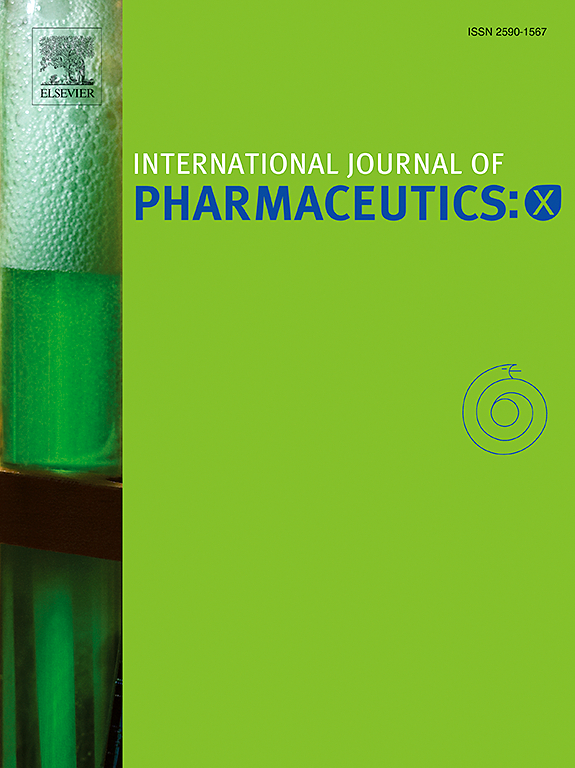Glycyrrhizic acid and its carrier-free micellar formulation: Unraveling the potential for enhanced oral prevention of hearing loss
IF 6.4
2区 医学
Q1 PHARMACOLOGY & PHARMACY
引用次数: 0
Abstract
Hearing loss, a global health concern, significantly impacts patients with delayed language development, impaired neurocognitive function, and severe social problems. The main cause is the cochlear hair cell damage induced by oxidative stress and inflammation from ototoxic drugs, noise exposure or diabetes. Glycyrrhizic acid (GA), derived from edible herb licorice, is widely utilized in traditional Chinese medicine and clinical treatments for liver diseases. However, its potential in preventing hearing loss remains largely unexplored. Herein, we propose GA as a novel otoprotective agent and demonstrate its capability to prevent hearing loss. Our results show that GA effectively reduces oxidative stress and inflammation induced by cisplatin, aminoglycosides, or even noise and diabetes, thereby protecting cochlear hair cells. In hearing loss models, two commonly used administration methods were compared, with tympanic injection providing better protective effects than oral administration of GA. To enhance oral bioavailability, GA is employed as both the medicine and excipient, and formulated into micelles with curcumin, another extensively used bioactive compound. Interestingly, formulation parameters such as feeding ratio and temperature have little impact on micelle size but significantly affect the drug loading efficiency. The carrier-free strategy can achieve a high drug loading capacity and significantly increase the drug concentration in blood, offering improved preventive efficacy. Notably, the micelles also exhibit protection on kidneys and liver, and do not compromise the antitumor activity of cisplatin. Therefore, GA holds promise as an otoprotective candidate, with potential clinical applications for oral prophylaxis of hearing loss using the micellar formulation.

甘草酸及其无载体胶束配方:揭示增强口服预防听力损失的潜力
听力损失是一个全球性的健康问题,严重影响语言发育迟缓、神经认知功能受损和严重的社会问题。耳蜗毛细胞损伤的主要原因是耳毒性药物、噪音暴露或糖尿病引起的氧化应激和炎症。甘草酸(Glycyrrhizic acid, GA)是一种从甘草中提取的可食用植物,被广泛应用于中医和临床治疗肝脏疾病。然而,它在预防听力损失方面的潜力在很大程度上仍未被探索。在此,我们提出GA作为一种新的耳保护剂,并证明其预防听力损失的能力。我们的研究结果表明,GA可以有效地降低顺铂、氨基糖苷类甚至噪音和糖尿病引起的氧化应激和炎症,从而保护耳蜗毛细胞。在听力损失模型中,比较两种常用给药方式,鼓室注射比口服GA具有更好的保护作用。为了提高口服生物利用度,GA被用作药物和赋形剂,并与另一种广泛使用的生物活性化合物姜黄素一起制成胶束。有趣的是,加料比和温度等配方参数对胶束大小影响不大,但对载药效率影响显著。无载体策略可实现高载药能力,显著提高血药浓度,提高预防效果。值得注意的是,胶束也表现出对肾脏和肝脏的保护作用,并且不会损害顺铂的抗肿瘤活性。因此,GA有望成为一种耳保护候选药物,具有潜在的临床应用,可用于使用胶束配方口服预防听力损失。
本文章由计算机程序翻译,如有差异,请以英文原文为准。
求助全文
约1分钟内获得全文
求助全文
来源期刊

International Journal of Pharmaceutics: X
Pharmacology, Toxicology and Pharmaceutics-Pharmaceutical Science
CiteScore
6.60
自引率
0.00%
发文量
32
审稿时长
24 days
期刊介绍:
International Journal of Pharmaceutics: X offers authors with high-quality research who want to publish in a gold open access journal the opportunity to make their work immediately, permanently, and freely accessible.
International Journal of Pharmaceutics: X authors will pay an article publishing charge (APC), have a choice of license options, and retain copyright. Please check the APC here. The journal is indexed in SCOPUS, PUBMED, PMC and DOAJ.
The International Journal of Pharmaceutics is the second most cited journal in the "Pharmacy & Pharmacology" category out of 358 journals, being the true home for pharmaceutical scientists concerned with the physical, chemical and biological properties of devices and delivery systems for drugs, vaccines and biologicals, including their design, manufacture and evaluation. This includes evaluation of the properties of drugs, excipients such as surfactants and polymers and novel materials. The journal has special sections on pharmaceutical nanotechnology and personalized medicines, and publishes research papers, reviews, commentaries and letters to the editor as well as special issues.
 求助内容:
求助内容: 应助结果提醒方式:
应助结果提醒方式:


